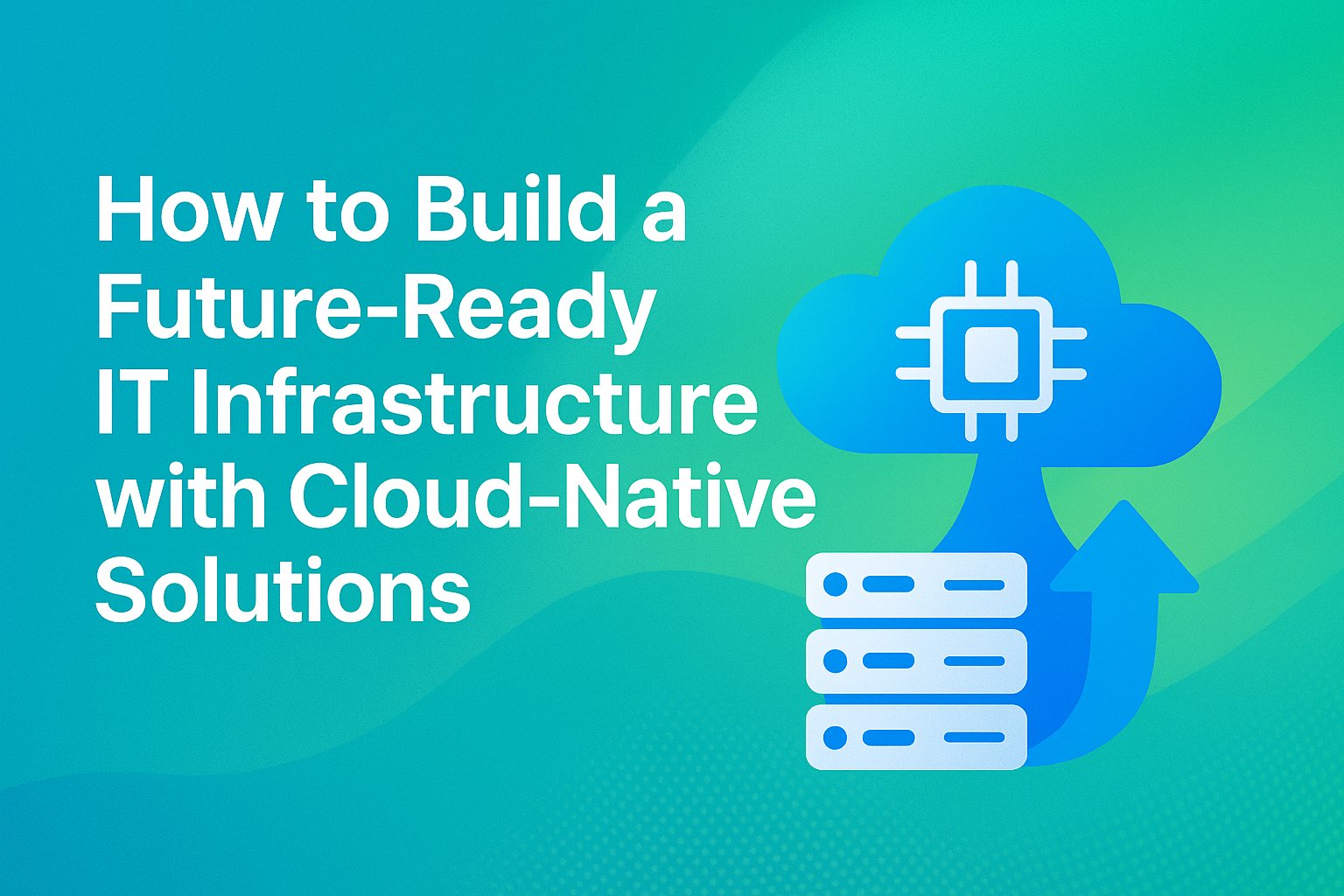Introduction: The Imperative for Cloud-Native Infrastructure
Enterprises today must respond rapidly to evolving digital demands, scale effortlessly, and maintain security and resilience—all while managing costs. The traditional monolithic and on-prem IT systems simply can’t keep up. Cloud-native solutions — built with microservices, containers, orchestration, and automation—is not just an option; it’s foundational for future-ready IT.
By 2025, more than 95% of enterprises will have adopted multi-cloud or hybrid-cloud environments; and cloud-native platforms will support over 80% of digital workloads.
Section 1: Why Cloud-Native Matters
Key Benefits at a Glance
| Benefit | Impact / Statistic |
| Faster Time-to-Market | 73% report quicker development & rollouts with cloud-native |
| Wider Adoption Trends | 78% of enterprises use cloud-native app dev (up from 58% in 2022) |
| Broad Benefits Alignment | 94% agree cloud-native apps/containers bring organization-wide benefits |
| Future Market Growth | Cloud-native platform market to expand from $5.85 B (2024) → $62.7 B (2034) |
Cloud-native designs enable modularity, agility, and robust performance—key attributes for businesses navigating digital acceleration.
Section 2: Core Pillars of Cloud-Native Architecture
- Microservices: Modular services deployed independently for resilience and scalability. (Most enterprises now use them; see Netflix, Uber examples.)
- Containers & Orchestration: Technologies like Kubernetes automate deployment, load balancing, and scaling.
- API-Driven Design: Enables seamless integration, extensibility, and loosely coupled systems.
- Automation & CI/CD Pipelines: Facilitate rapid, reliable releases and platform upgrades.
Section 3: Strategic Benefits to IT and Business
- Agility & Innovation
- Prototype and release features faster with isolated, deployable microservices.
- Resilience & Availability
- Fault-tolerant services mean one failure doesn’t cripple the rest.
- Cost Efficiency & FinOps Readiness
- Serverless and auto-scaling architectures reduce over-provisioning and waste.
- Emerging FinOps practices optimize spend as deployment scales.
- Multi-Cloud & Hybrid Strategies
- Stats show 78% prefer hybrid/multi-cloud to avoid vendor lock-in; 90% expected to use hybrid through 2027.
Section 4: Implementing Cloud-Native Infrastructure
Step-by-Step Blueprint
| Phase | Key Actions |
| Assessment | Audit legacy systems and identify scalable workloads. |
| Pilot Project | Containerize a microservice; deploy via Kubernetes on hybrid cloud. |
| Platform Setup | Build internal Developer Platform with Argo/Flux and Crossplane. |
| Expand & Automate | Integrate CI/CD, observability, and governance tools. |
| Govern & Optimize | Implement FinOps strategies; monitor costs and performance. |
| Iterate Fast | Continuously evolve architecture with feedback and scaling needs. |
Section 5: Pitfalls and Governance Considerations
- Complexity Creep: Without governance, microservices and multi-cloud can spiral in complexity; visionary leadership (e.g., from the CTO) is essential.
- Security Risks: As multicloud grows, enforcing Zero Trust and cloud-native protection becomes critical.
- Cost Overruns: Gartner reports 69% experience cloud overspend, emphasizing the need for budgeting and monitoring frameworks.
Conclusion: Becoming Future-Ready with Cloud-Native Infrastructure
Building future-ready IT infrastructure demands rethinking how we design, deploy, and govern technology. Cloud-native solutions—rooted in microservices, automation, and hybrid strategies—enable organizations to deploy quickly, manage risk, and scale effectively.
As the market evolves, companies that prioritize architectural agility, cost visibility, and robust governance will outperform peers in innovation and operational resilience.







